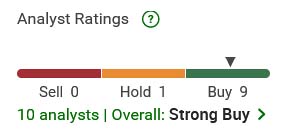I like rules and the rules guiding investing are no exception. I follow a lot of them. But, I must confess, I break almost as many as I follow.
One rule I follow rigidly is the diversification rule. A portfolio should have no fewer than 20 investments and no more than 30. Too few and risk begins to rise. Too many and one might as well buy an index ETF. This is not to knock index ETFs but I am retired. I need income. I can buy two dozen dividend-paying stocks and get more income than I could from most index ETFs. Think ENB, TCP, T, TD, BMO, PPL, BCE, FTS, EMA and the list goes on.
One rule I do not follow is the fixed income vs. equity split that, according to the rule, one should have in one's portfolio. The traditional rule says subtract your age from 100 and allocate that percentage to equities. An updated version says subtracts your age from 120. I do neither. I simply invest in equities. Period. No fixed income investments other than cash and that cash is there to meet emergency expenses or to buy more equities when a bargain arises. Since cash today is yielding 4.55%, I do O.K.
I have too much home bias in my portfolio. Why? I have a dividend-weighted portfolio and dividends from Canadian companies carry benefits denied those dividends from foreign companies. But even I cannot completely ignore other markets, especially the United States. I have about 10% of my portfolio invested in XUS. If the American market pops, I benefit. If I were younger and did not need the dividends to live, I would own more but I am not and I don't. If the price declines in the future, I am planning on adding to my non-home investments by buying a little VIDY (Vanguard FTSE Developed ex North America High Dividend Yield Index ETF). Its yield today is 3.9%. VIDY delivers diversity, maintains dividend income and lowers one's home bias. Love it!
I like to buy and hold and hold and hold. I have held my BMO stock so long it is close to doubling in value. My BMO investment is yielding about 9.75% a year in dividend income calculated on the original investment value.
But, I am learning there is a time to sell. When a stock price gets inflated, dump it. Move on. When the price comes down, consider buying back in. I sold some Nutrien when it was in the $145 range but for the most part, I held on while the stock slipped all the way to $76. By the time I sold, NTR may have hit bottom and it might have been a better time for buying than selling. If NTR gets low enough to raise the dividend yield to 4%, I will buy a little for diversity while maintaining income.
And those are my thoughts for the day. Oh, and have a very merry Christmas. Cheers!





